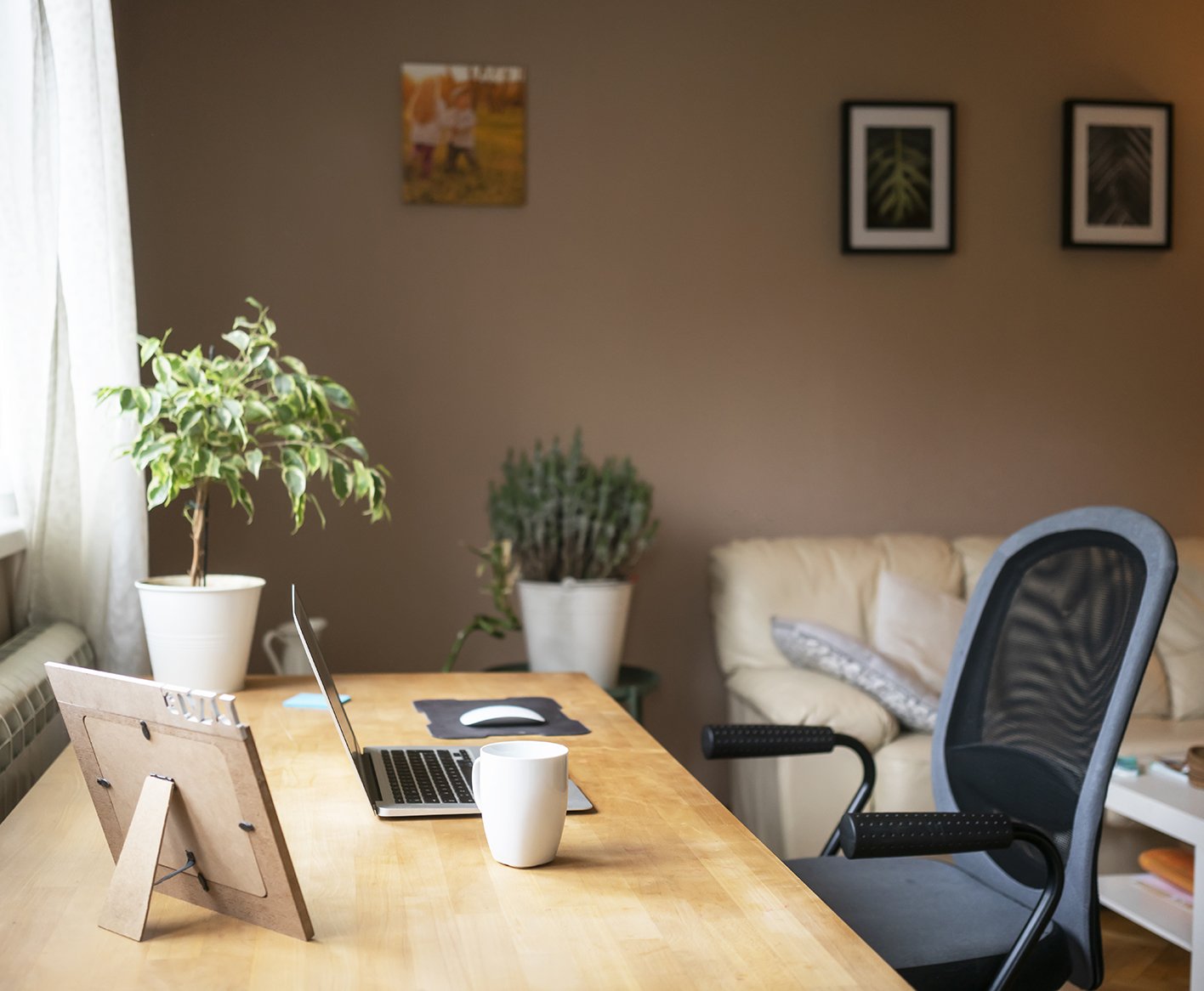
The home workplace has been a growing trend for decades, and now, we’re all learning what can be achieved from home. Aside from the benefits of dressing for comfort and losing the commute, many people prefer working from home for a variety of reasons, including better focus, better family time, and better access to a healthy environment and lifestyle.
So, how do we make working from home work for us? Let’s look at four ways to get started on your home office design.
There’s no need to climb the corporate ladder to get the corner office or the best view. Give yourself a promotion by claiming a space, no matter how small, that truly works for you. Consider your needs — ample sunlight, quiet and seclusion, a place to spread out papers, lists, books, and monitors.
You can find a workspace in unlikely places such as lofts and stair landings, attics, basements, enclosed porches, even garages (think sawhorses and a sheet of plywood). A walk-in closet turned “cloffice” may be the quietest place in the house. A nook in a living room or a console table behind a sofa may suit you fine. If your dining room is only used for more formal dinners, consider converting it temporarily by pushing the table against a wall to use as desk space, then use bin containers underneath to hold files and supplies that can easily be moved when company comes.
If all you need is a laptop computer and a notepad to get your job done, then go wherever the mood strikes. Maybe outdoors? But always be sure to keep a special place where you can find your miscellaneous necessities — a decorative box, basket, or a flat bottom tote bag.
If you’re lucky enough to have a room specifically designated as an office, make the most of it with furniture, shelving, lighting, a comfortable chair, and décor that motivates and inspires you. Invite your personal life into your workspace with art, mementos, and favorite books. Your office can be used for more than work. It’s also the perfect place to pursue hobbies and accomplish tasks like paying bills.
Office space no longer requires banks of file cabinets and paper clutter, but we still need a surface to park our laptops, monitors, phones, lamps, notes, earbuds, etc. Ideally, the work surface will be large enough to accommodate these things, but even a small space for a laptop will work nicely. Make sure your surface is the proper height for you and your chair. Most work surfaces are 28” to 30” high but should be adjusted for your height. This can sometimes be accomplished by adjusting the height of your chair. The wrong desk height can lead to back problems. There’s also the issue of proper monitor height and distance to prevent eye strain.
If you enjoyed using a standup desk at your office, there isn’t any reason why you can’t recreate one at home. You can either construct one from an existing table by adding another surface above it, or if there is a bar height counter in your home, simply remove the stool and get to work.
If your office will be used long-term, then it makes sense to invest in proper furniture and computer equipment to make your workspace effective and safe.
Organization is key to any workspace. Although your files may be digital, you will always need to find that little slip of paper where you wrote down that idea you should never forget. A simple file box can make a world of difference in maintaining and organizing notes, receipts, and interesting references for future use.
Notepads, notebooks, pens, pencils, and paperclips should be in arm’s reach. Bookcases with cabinet space below are very functional for an office space but can also be used in living areas.
And don’t forget a place for trash and recycling. Tossing wadded-up paper on the floor can get old. Have a trash can nearby to practice your layup shots.

One advantage of working from home is being surrounded by the things you love, instead of office equipment buzz, harsh lighting, and sterile furnishings.
No need to ask the office manager if you can paint your office. This space is truly yours, so choose colors and décor that inspire you. According to Psychology Today, research shows that the color blue has a calming effect. But your work process may benefit from bold colors that stir the imagination through artwork or a painted accent wall, or you may prefer the focus provided by the clean sophistication of simple black and white.
Choose a chair that is comfortable but unlikely to lull you to sleep. You might like to have a coffee maker or electric tea kettle near you, to avoid an excuse to wander into the kitchen where snacks and distractions lurk.
If you don’t have the luxury of natural lighting, or if you prefer to work at night, select a desk lamp that is both functional and reflects your personal style. Choose one that can be dimmed for when work hours are over.
The information and materials provided on this website are intended for informational purposes only, and should not be treated an offer or solicitation of credit or any other product or service of Regional Finance or any other company. This website may contain links to websites controlled or offered by third parties. We have not reviewed all of the third party sites linked to this website and are not responsible for the content, products, privacy policy, security, or practices of any linked third party website. The inclusion of any third party link does not imply any endorsement by Regional Finance of the linked third party, its website, or its product or services. Use of any third party website is at your own risk.
You can prequalify for your personal loan online in just minutes by clicking prequalify now. Or, if you prefer, call or stop by your local branch to get the process started. Our loan specialists can answer any questions you may have such as what a personal loan is, understanding personal loan interest rates, and how to qualify for a personal loan. We’ll help you fill out an application for the type of loan that fits your needs.